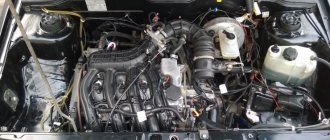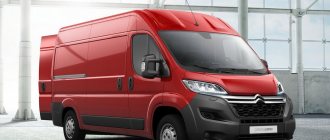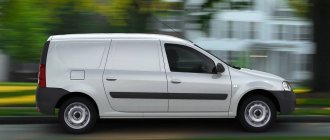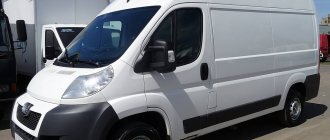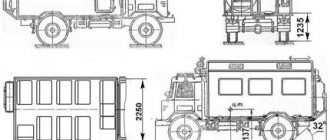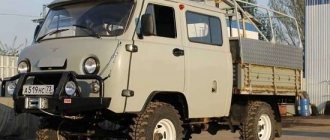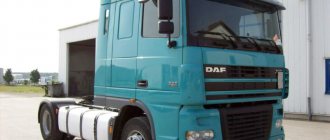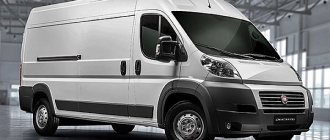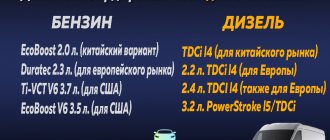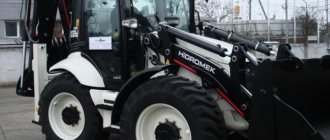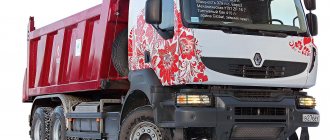Small cargo minibuses have become good helpers in small and medium-sized businesses. We present to your attention the Citroen Jumper van with an all-metal body. But that is not all! The line includes a minivan and a flatbed truck. First of all, this vehicle is aimed at transporting small-sized cargo. The line includes 3 model options for body height and 4 for body height. And you decide for yourself which one is suitable specifically for your purposes!
Body range of Citroen Jumper III vans
Model history
The Citroen Jumper minibus became another chapter in the history of the PSA concern. The first generation appeared back in 1994. Then everyone only compared it with the Peugeot Boxer (1994) and Fiat Ducato (1981) cars. The reason for such discussions was their identical appearance. Once you close the emblem, it’s already difficult to determine which of them is which. Everything was explained by their common production at the facilities of the Sevel enterprise, which was created in cooperation between the PSA Group and FIAT.
First generation Citroen Jumper and Peugeot Boxer vans
But this turned out to be just a shell, despite the fact that some parts were interchangeable. None of the power unit modifications could be installed on another model.
In fact, the Jumper became the successor to the older Citroen C25 model. It was presented on the occasion of the opening of the Geneva Commercial Vehicles Show. The cargo-passenger Citroen Jumper is a successful product of cooperation between three companies represented by Citroen, Peugeot and Fiat.
First generation 1994-2006 years of production
Citroen Jumper II can be distinguished by its characteristically changed front part.
The first generation was produced for the European market (restyled models of 2002 were sold in Russia) and was represented by several modifications:
- vans 2002 2.0 MT L1H1, L2H2;
- vans 2002 2.2 HDi MT L1H1, MT L2H2;
- vans 2002 2.8 HDi MT L1H1, L2H2;
- minivans 2002 2.0 MT COMBI CLUB;
- minivans 2002 2.2 HDi MT COMBI CLUB;
- minivans 1994 1.9D MT 27C/27CH, 27CH;
- minivans 1994 1.9TD MT 27C/27CH, 27CH;
- minivans 1994 2.0i MT 27C/27CH, 27CH;
- minivans 1994 2.5TD MT 27C/27CH, 27CH;
- minivans 1994 2.5D MT 27C/27CH, 27 CH;
- vans 1994 1.9D MT 27C/31C, 27CH/31CH;
- vans 1994 1.9TD MT 27C/31C, 27CH/31CH;
- vans 1994 2.0i MT 27C/31C, 27CH/31CH, 31M, 31MH/35MH, 31LH/35LH;
- vans 1994 2.5TD MT 27C/31C, 27CH/31CH, 31M, 31MH/35MH, 31LH/35LH;
- vans 1994 2.5D MT 27C/31C, 27CH/31CH, 31M, 31MH/35MH, 31LH/35LH.
Minibus Citroen Jumper II in the richest configuration with a full range of options.
The fuel tank volume in first generation cars is 80-120 liters.
Second generation since 2006 release
The line received restyled models in 2014:
- flatbed truck with manual transmission, front-wheel drive and diesel engines of 130 and 150 hp;
- minivan with manual transmission, front-wheel drive and diesel engines of 130 and 150 hp;
- all-metal van with manual transmission, front-wheel drive and 130 hp diesel engine.
All-metal van Citroen Jumper III 330 L2H2
There is a huge variety among the second generation trim levels.
This:
- trucks 2014 2.2 HDi MT L3, L4, L3 side curtain, L3 S side curtain, L4 side curtain;
- minivans 2014 2.2 HDi MT L1H1 Tour Standart, L2H2 Tour Standart, L4H2 minibus, L4H2 tourist;
- vans 2014 2.2 HDi MT L1H1 (2.5, 2.8, 4t), L2H2 (2.5, 2.8, 2.9, 4t), L3H2DI (2.5, 2.8t), L3H2 (3.5, 4t), L3H3 3.5t, L4H2 3.5 t, L4H2MC11 4t, L4H3 3.5t, L4H3MC11 4t, L1H1 Tour Transformer, L2H2 Tour Transformer, L2H2 Profi Transformer, L3H2 Profi Transformer, L4H2 Profi Transformer;
- vans 2006 2.2 HDi MT L1H1, L2H1, L2H2, L3H3, L4H2, L4H3;
- minivans 2006 2.2 HDi MT L1H1 Tour Standard, L2H2 Tour Standard, L4H2 tourist.
Minibus Citroen Jumper III Minibus 330 L2H2
The fuel tank volume in second generation cars is 90-120 liters.
Design
The Citroen Jumper has become not only a convenient minibus for passenger transportation and cargo transportation. This is the real face of companies that use it for commercial purposes.
Citroen Jumper III Double Cab 330 L3 flatbed
Nice bodies are welded onto the frame structure of a Citroën Jumper for business. In addition to cargo vans and minibuses, these can be insulated and manufactured goods vans, tilt platforms with folding sides and refrigerated trucks.
Exterior
The appearance of the model for transporting small-sized cargo fully corresponds to the image of a modern minibus. The emphasis is on the quality of materials and the cargo capabilities of the vehicle.
The door guides have been strengthened. The rear doors open wide, so that impressive amounts of cargo can be loaded into the car. The door height is up to 2.03 meters and the width is up to 1.422 m.
An almost invisible camera is installed on the rear bumper, which is also capable of monitoring the degree of loading of the vehicle.
Interior
The interior of the new van is entirely aimed at the comfort of the driver and passengers. And this is very important during long hours of business travel and cargo transportation. A plain finish, without unnecessary elements, creates maximum comfort. And the driver will not get tired of the soft leather steering wheel even after several working days spent on the road.
Cabin of Citroen Jumper III '2007. A number of optional equipment are installed in the photo
The focus is on the ergonomics of the driver's seat, as well as features that make life easier on the road. Starting from the first models, the Jumper was equipped with a Connecting Box system with Bluetooth and a USB connector.
An unusual but very convenient solution for the driver was the gear shift knob, which is now located on the front panel rather than at the bottom. Front passengers are in for a surprise in the form of armrests and lumbar support adjustment.
In 1994, on the Citroen Jumper, Peugeot Boxer and the co-platform FIAT Ducato, a joystick-style gear shift lever appeared for the first time on an LCV.
Overall, the interior feels a bit like a well-organized office with plenty of useful shelves and compartments. A 5-inch multimedia display with pleasant backlighting is responsible for navigation. In fact, Jumper became the first car in its class to receive a touch screen synchronized with a rear view camera and navigation system.
Three types of information are displayed here:
- marking a lane that cannot be crossed;
- door span mark, which allows you to calculate the area for opening the cargo compartment;
- marking the required space for reversing.
To place a smartphone or overhead documents above the console, a special tablet with convenient mounts is provided.
The cargo compartment is designed for more careful transportation of small items. The Jumper is the most spacious model in its class. The distance between the partitions is 1.87 m, and the useful loading volume is in the range of 8-17 m3.
General classification of Citroen passenger vans
A van is a type of closed automobile body designed for transporting people and various cargoes. This single-volume type is called Van in North America.
Its distinctive features are a partition separating the passenger compartment from the cargo compartment, the absence of rear side windows, and increased height. Body types such as station wagon and hatchback are also classified as vans if they are specifically designed to carry small loads and do not have rear side windows.
Passenger vans are divided into three categories depending on their purpose:
- Universal cars are cars of general specialization. This includes cargo-passenger vans with a separate compartment for passengers located behind the driver's cab.
- Special – designed for transporting various equipment.
- Specialized - created for a specific type of cargo with certain transportation conditions. This includes, for example, furniture vans, refrigerators, and insulated vehicles.
Passenger vans are also divided into the following types:
- All-metal light or medium-duty.
A characteristic feature is the absence of a partition between the driver’s cab and the body. It has a hoodless, short-hood or hood layout. They can be equipped with a sliding driver's door and have aluminum body panels. Such models have become widespread in North America and Asia, where they are used in the urban cycle as postal and delivery vehicles. This category of vans often has an increased roof height and is unified with minibuses and combis. - A passenger car, created on the basis of a station wagon with a monocoque body. It differs from the station wagon in the absence of upholstery in the rear part of the cabin and rear passenger seats. It can also have a standard or increased height roof.
- A passenger box van based on a frame truck. It has a cabin that is structurally separated from the body.
Specifications
The range of Citroen Jumper dimensions includes the following models:
- with a cargo compartment length in the range of 2680–4070 m;
- with a permissible maximum weight of 3 or 4 tons;
- with a cargo compartment height in the range of 1662–2172 m.
You can combine the necessary parameters to transport a specific cargo. The Citroen Jumper has become a real record holder for carrying capacity. This small van can hold up to 1.8 tons of cargo.
Range of bodies based on the 2016 Citroen Jumper III chassis, after restyling
Engine and transmission
Different engines were offered in Citroen Jumper trim levels:
- diesel XUD9A 1.9 l;
- diesel XUD9T 1.9 l;
- diesel 4H03 2.2 l;
- diesel 4HV 2.2 l;
- diesel 4HU 2.2 l;
- diesel DW12;
- diesel DJ5 2.4 l;
- diesel 8140 2.5 l;
- diesel 8140 2.8 l;
- petrol XU10 2 l.
The 8140 power units were “borrowed” from the Iveco Daily.
- 2.2-liter 4-cylinder in-line engines were developed personally for the restyled version of the Jumper (2014). These are 4H03 turbo engines with a maximum power of 150 hp.
- 2.2-liter 4HV with 100 hp. installed on minivans and all-metal vans of the second generation. These are front-wheel drive models driven by a manual transmission.
- 2.2-liter 4HU with 120 hp. Front-wheel drive minivans and vans of the 2nd generation with manual transmission were also equipped. 2-liter petrol XU10 with 110 hp. installed on restyled vans and minivans of 2002, as well as on European versions of the first generation of Jumper vans and minivans. Other European versions were equipped with the XUD9A (71 hp), DJ5 (86 hp and 107 hp), XUD9T (92 hp) engines.
The engine torque ranges from 120 to 350 N*m. They are very economical - consumption averages 7.5-8.5 liters.
The most “insatiable” was the 2-liter gasoline engine with 110 hp, consuming up to 12.8 liters. It was installed on first generation cars.
2006 and 2014 models release were equipped with more economical units consuming 7.4 liters. fuel. Only 2.2-liter diesel engine 150 hp. increased consumption to 8.7 liters.
As for the transmission, the Jumper is equipped with a “good old” manual gearbox. The first generation drives a 5-speed gearbox, while the second has already received a 6-speed gearbox. The only exceptions were two 2006 models. This is an all-metal van and minivan with 2.2 liter engines. 100 hp power
Suspension and ride quality
The Citroen Jumper, in almost any configuration, accelerates to 100 km/h in 20.2 seconds. This is a pretty good indicator for a minitruck. Only the version with a 2.8-liter diesel engine with 127 hp. reaches 100 km/h in 20.5 s.
The front suspension resembles the design of conventional passenger cars. There is a MacPherson strut and a transverse engine.
The rear beam is more similar to commercial vehicle solutions. And this is justified, because the main load falls on the rear suspension, although it is not driven. The leaf springs are neatly laid on the beam. The number of sheets depends on the length of the car. The short ones have only one sheet, the medium ones have a sheet with a spring, and the long ones have two sheets.
The manufacturer has strengthened the fastening elements of the shock absorbers to the body part.
Features of operation
We also took care of the security system here. In addition to the rear view camera, the car received the Hill Descent Control function, which controls the car’s behavior on a descent. Jumper can also recognize when the tire pressure level drops below normal.
Citroen Jumper III minibuses are well known in many parts of our vast country.
Citroen Jumper vans and minivans can be used in the harsh conditions of the Russian climate. It is reliably “armed” with a high-power generator, a high-capacity battery and a Webasto after-start heater.
Advantages of Citroen FAVORIT MOTORS
You can buy passenger and commercial vehicles of the brand at the car showroom of the official Citroen dealer FAVORIT MOTORS in Moscow. We offer:
- Large selection of cars.
- Professional consultations.
- Credit, leasing.
- Car purchase and exchange.
- Car insurance from the country's leading insurance agencies.
- Test drive in real road conditions, which will allow you to evaluate the car before purchasing.
- Competitive prices. The cost is affected by the power and type of engine, type of transmission, level of equipment and finishing.
- Loyalty program.
- Stock.
You can check the availability of equipment and prices on the dealer website or by phone. You can also use the call back form or write to us on Facebook, Instagram, VKontakte, Viber, Telegram.
Typical problems and malfunctions
Unfortunately, even the best are not immune to shortcomings. Citroen Jumper is a wonderful car that boasts high quality build and materials. However, he also has a couple of secrets.
The most common problem was the accumulation of condensation in the headlights. Over time, this leads to “eating” the mirror reflective layer. The problem is solved by sealing the back cover of the flashlight. By the way, you have to install the cover almost blindly.
Jumper owners often complain of metallic or muffled knocking noises when starting/stopping the engine or idling. This may indicate failure of the dual-mass flywheel elements. Experts recommend replacing the entire component, unless it concerns only damper springs.
Jumpers with a significant mileage “complain” about increased oil consumption. Often the problem is in the valve stem seal, which simply needs to be replaced. Sometimes the cause is the engine itself. It needs to be diagnosed.
